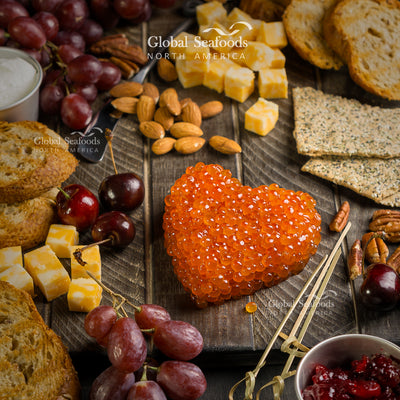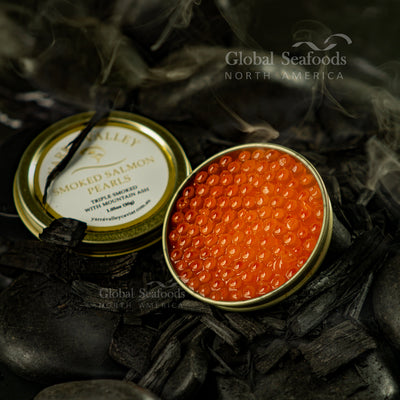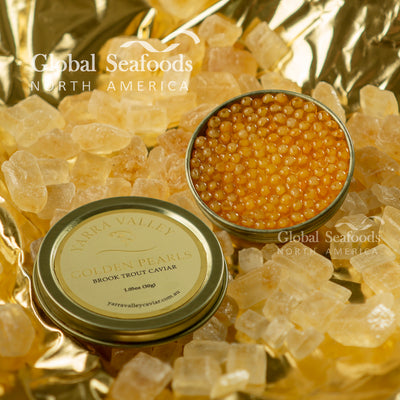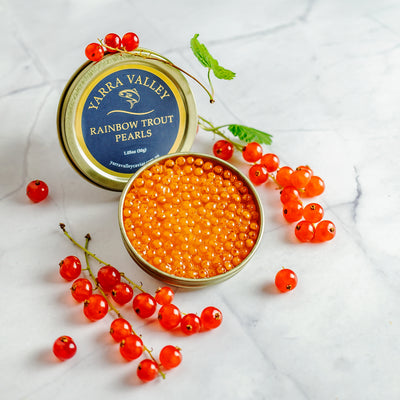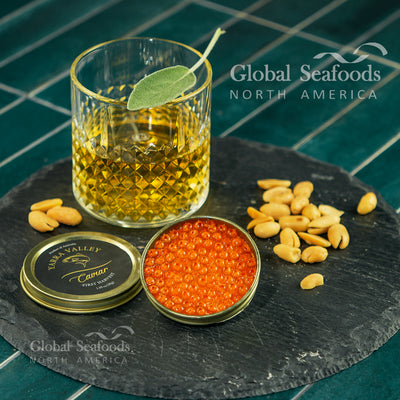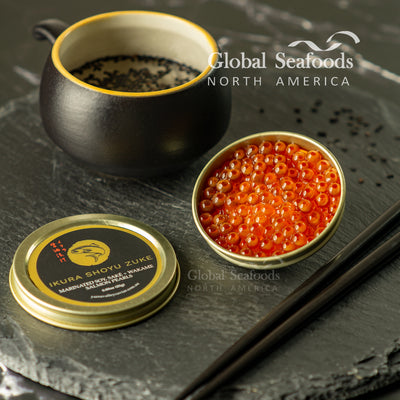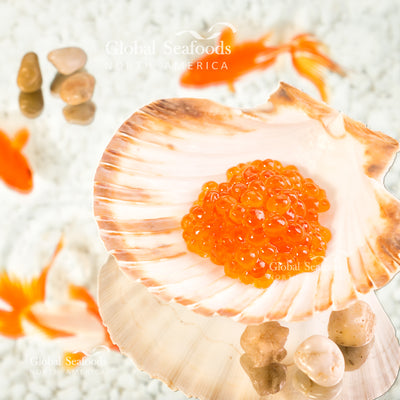Red Caviar: A Comprehensive Guide to This Vibrant Seafood Treasure
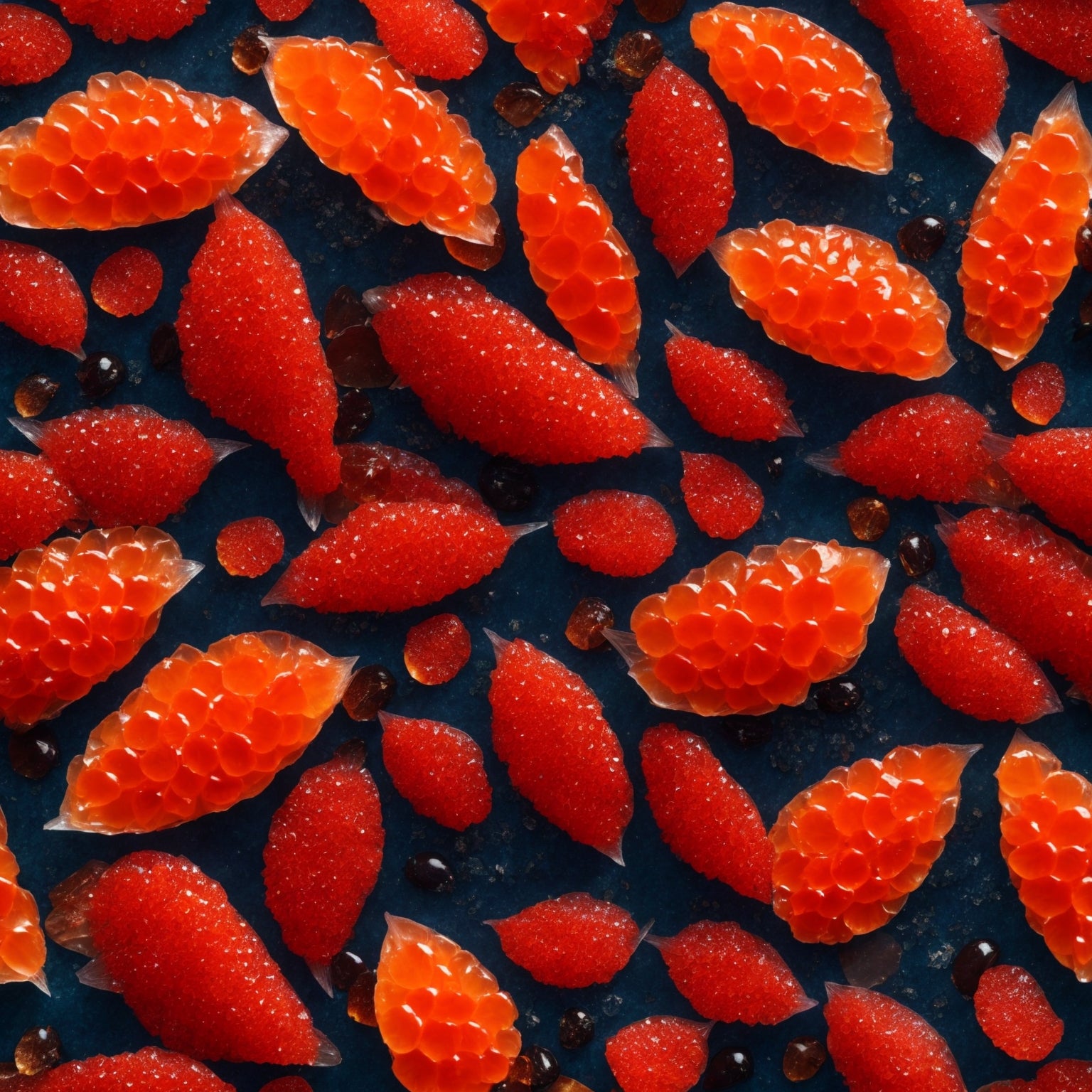
Red Caviar: A Comprehensive Guide
Red caviar is a luxurious delicacy with an eye-catching orange hue, delicate texture, and unique flavor. Sourced from salmon species like chum, coho, and sockeye, it’s a favorite among seafood enthusiasts for its culinary versatility and nutritional benefits.
In this article, we’ll uncover the intricacies of red caviar, delving into its characteristics, harvesting process, health advantages, and creative uses in the kitchen.
What Makes Red Caviar Unique?
Red caviar stands out from other types of caviar due to its striking appearance and the species from which it’s derived.
Key Characteristics of Red Caviar
- Color: Vibrant orange to deep red, depending on the salmon species.
- Flavor: A milder, less salty taste compared to black caviar, with subtle briny notes.
- Texture: Medium to large eggs with a satisfying “pop” when eaten.
Types of Salmon for Red Caviar
- Chum Salmon (Oncorhynchus keta): Known for producing larger, mildly flavored roe with a firm texture.
- Coho Salmon (Silver Salmon): Offers a slightly tangier taste with medium-sized pearls.
- Sockeye Salmon: Produces smaller eggs with a rich, bold flavor.
Red caviar’s versatility and appealing flavor make it a perfect addition to gourmet dishes or casual dining experiences.
How is Red Caviar Made?
The process of creating high-quality red caviar requires care and precision to preserve its flavor and texture.
1. Harvesting the Roe
Red caviar is harvested during the salmon’s spawning season. Skilled fishermen carefully extract the roe to minimize damage, ensuring the pearls remain intact.
2. Cleaning and Sorting
The roe is washed to remove impurities and sorted based on size, color, and texture. This grading ensures that only premium-quality caviar is selected for further processing.
3. Brining for Flavor
The roe is cured in a salt brine, which enhances its natural flavor while preserving its freshness. The level of salinity varies, giving each batch a unique taste profile.
4. Packaging and Storage
Finally, the caviar is packed into airtight containers to maintain its freshness and prevent oxidation. It’s then stored at cold temperatures, ready to delight food enthusiasts worldwide.
Explore premium options like Chum Salmon Caviar Soft Shell and Rainbow Trout Pearls.
The Flavor and Texture of Red Caviar
Flavor Profile
Red caviar offers a delicate briny taste that’s milder than black caviar. The subtle saltiness and oceanic notes make it appealing to both first-time tasters and seasoned connoisseurs.
- Chum Salmon: Mild and slightly sweet.
- Coho Salmon: Tangy with a clean, briny finish.
- Sockeye Salmon: Rich and bold, with a more pronounced ocean flavor.
Texture
Red caviar is celebrated for its plump, slightly crunchy pearls that burst with flavor in your mouth. This satisfying texture adds a luxurious touch to any dish.
Health Benefits of Red Caviar
Red caviar is as nutritious as it is delicious. Packed with essential vitamins and minerals, it’s a superfood that supports overall health.
1. High in Omega-3 Fatty Acids
- Heart Health: Omega-3s help reduce cholesterol and prevent heart disease.
- Brain Function: Supports memory, focus, and cognitive health.
- Inflammation: Reduces joint pain and promotes overall well-being.
2. Rich in Protein
A single serving provides a significant amount of complete protein, essential for muscle repair and energy production.
3. Abundant in Vitamins and Minerals
- Vitamin B12: Enhances energy levels and supports nervous system health.
- Vitamin D: Promotes strong bones and boosts immunity.
- Selenium: Acts as a potent antioxidant.
- Iron: Helps prevent anemia and supports oxygen transport in the body.
4. Low in Calories
Despite its rich taste, red caviar is surprisingly low in calories, making it a guilt-free indulgence.
Culinary Uses of Red Caviar
Red caviar is a versatile ingredient that can elevate both simple dishes and elaborate gourmet creations.
1. Traditional Serving Styles
- Blinis with Crème Fraîche: A classic pairing that highlights the caviar’s subtle flavors.
- Toast Points: Simple yet sophisticated, perfect for any gathering.
2. Modern Dishes
- Caviar Pasta: Add red caviar to creamy pasta for a luxurious twist.
- Deviled Eggs: Top deviled eggs with caviar for an elevated appetizer.
- Risotto with Red Caviar: Sprinkle caviar over risotto for a touch of elegance.
3. Japanese Cuisine
- Sushi Rolls: Use as a topping for sushi or sashimi to add vibrant color and flavor.
For more inspiration, visit our YouTube channel.
Sustainability: Ensuring the Future of Red Caviar
Sustainable sourcing is essential for preserving salmon populations and their ecosystems.
1. Sustainable Fishing Practices
- Catch Limits: Prevent overfishing and protect marine biodiversity.
- Selective Fishing Methods: Reduce bycatch and minimize environmental impact.
2. Certifications for Ethical Sourcing
Look for certifications like the Marine Stewardship Council (MSC) to ensure the caviar is responsibly sourced.
Support sustainability by choosing options like Golden Pearls Brook Trout Caviar.
FAQs About Red Caviar
1. What sets red caviar apart from black caviar?
Red caviar is sourced from salmon, offering a milder flavor and vibrant color. Black caviar, derived from sturgeon, has a more intense taste and smaller pearls.
2. Is red caviar healthy?
Yes! Red caviar is rich in omega-3 fatty acids, protein, and essential vitamins, making it a nutrient-packed choice.
3. How should I store red caviar?
Store at 28°F to 32°F in an airtight container and consume within 2–3 days after opening.
4. Can I freeze red caviar?
While freezing is possible, it may alter the texture. Refrigeration is recommended for the best experience.
5. Where can I buy high-quality red caviar?
Shop premium caviar at Global Seafoods.
Conclusion
Red caviar is a luxurious yet accessible delicacy that brings a burst of flavor and elegance to any meal. From its unique color and texture to its rich nutritional benefits, it’s a must-have for seafood lovers and gourmands alike. By choosing sustainably sourced options, you can indulge in this exquisite treat while supporting the preservation of salmon habitats.
Explore our premium selection of red caviar, including Coho Salmon Caviar and Bloody Shiraz Infused Caviar, and enhance your culinary creations today.
Also in News

How to Make Sea Bream Sushi With Dry-Aged Tuna & Crab Roll — Step-by-Step With Chef Joshua
A complete guide to making Sea Bream sushi at home, including filleting, curing, slicing, and building a Dry-Aged Tuna & Crab sushi roll. Chef Joshua shares professional tips for restaurant-quality results.

Boiled Crab for Game Night: Everything You Need for a Perfect Seafood Party
Take your game night to the next level with a Boiled crab party. Learn the best recipes, cooking tips, and hosting hacks for a memorable seafood feast.

Boiled Crab for Date Night: A Romantic Guide to the Perfect Seafood Feast
Make your next date night unforgettable with a romantic Boiled crab experience. This guide covers everything you need to know, from ambiance to the best crab varieties.

